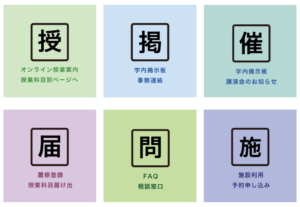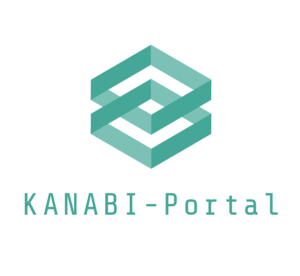Kanazawa College of Art's "Coronavirus and New Lifestyle and Design" Initiatives
Introduction of Distance Learning
Kanazawa College of Art has been promoting education under the motto “Think with Hands, Make with heart” in its educational guidelines, and has been placing great importance on small-group, face-to-face education. Although our university has kept a distance from distance education, the spread of COVID-19 has forced us to take a major step toward the introduction of online classes. Here I would like to mainly summarize the development of our distance learning system and the results of our preparations for the new semester, which supposed to start in early April 2020 and was pushed back to May 11, 2020, and a review of our current situation.
Preparation of the System to Carry Out Distance Learning
The following systems have been put in place for distance learning.
1.Launch of “KANABI-Portal”
“G-Suite for Education” was contracted and the portal site “KANABI-Portal” was launched. Students were notified on the bulletin board, application documents were distributed, and a classroom was prepared for each class. A system has been in placed to keep students informed of what is happening at the university.


2.Acquire the domain and issue address for KANABI-Portal
The KANABI-Portal site for distance learning was set up independently of the existing on-campus system, and the domain for the KANABI-Portal (@kanabi-portal.jp) was acquired to avoid confusion between the two systems. A new address was issued to both students and faculty.
3.Acquire a paid zoom account
Paid accounts were obtained for “Zoom (video conferencing system)” for all full-time faculty members and part-time instructors to ensure interactivity. In addition to Zoom, we also use Google Classroom’s “Meet” and other tools in our classes.
Benefits of the KANABI-Portal
Below are three initiatives that we believe have been effective at this point.
1.Realization of the university by using Google Classroom in all classes
Some faculty members wanted to use the existing tools such as video conferencing systems that they have. But, even in those cases, we developed rules to take attendance in Google Classroom on the KANABI-Portal or use the “stream” in Google Classroom to inform the class on the details for the day (whether it is on-demand or live, in the case of live distribution, show tools such as Meet, Zoom, and show URL). As a result, students first access the KANABI-Portal as if they were commuting to a university campus. This gave them some sense of a university where faculty and staff are collectively connected, although virtually on the Internet.
2.Information sharing through training for all teachers, whether full or part-time
All teachers, both full-time and part-time, involved in the first semester classes, were invited to participate in a general training using Zoom. By having teachers from various positions participate in the training, we were able to share a variety of questions and solutions. Furthermore, a Google Classroom was set up for teachers to exchange information, and the sharing of a lot of information was effective in the short time before the start of classes.
3. Support from distance learning support team
For the implementation of the distance learning system, we have set up three units of the “Distance Learning Support Team” to support the first few classes for full-time faculty members as well as part-time teachers. The role of this team is to maintain the Google Classroom, provide advice to teachers, and support teachers who have difficulty operating the equipment and those who participate in classes on a one-off basis, such as guest speakers. The teams have been effective in advising teachers on how to achieve what they want to do and in addressing their concerns.
Review at This Point
Although there are still some issues with the way classes other than the lecture-based lessons are conducted for a university teaching practical skills, some faculty members said that the program provided an opportunity to reflect on their own education while working on verbalizing and visualizing technologies and ideas. Several faculty members felt that students were able to learn about on-demand lectures at their own pace, and that the quality and quantity of the lessons were better than face-to-face. We will continue to examine these experiences and consider how to incorporate them into our distance education system.
2021.7.2

 Return to List
Return to List